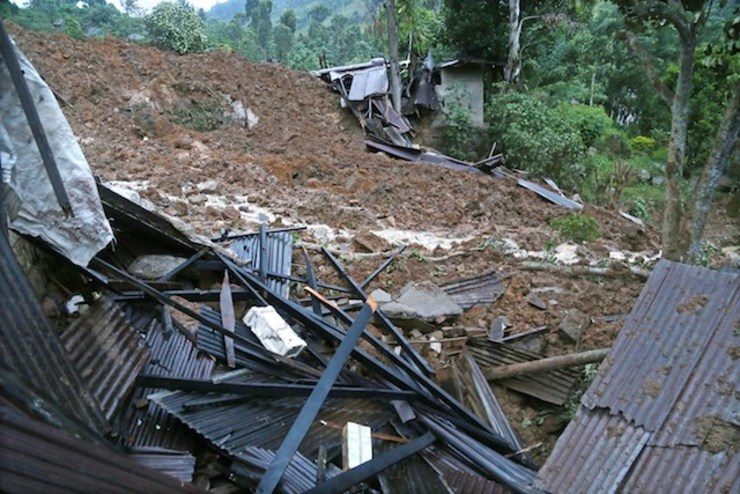SUMMARY
This is AI generated summarization, which may have errors. For context, always refer to the full article.

KOSLANDA, Sri Lanka – Soldiers using heavy diggers stepped up their desperate search on Thursday, October 30, for victims of a landslide in Sri Lanka, feared to have buried alive 100 people on a tea plantation.
Hundreds of rescue workers clawed through tons of mud that washed away some 150 tin-roofed homes at the plantation on Wednesday, October 29, while most of the residents were away at work or in school.
“We are also bringing in an additional 200 troops to add to the 500 already here to carry out the search,” the region’s top military officer, Major General Mano Perera, told reporters.
Rescue efforts were however being hampered by persistent rains, blamed for the initial mudslide, and the unstable conditions of the surrounding hills, the officer said.
Shop keeper Vevaratnam Marathamuttu said he ran when tons of earth came crashing down the mountain on Wednesday morning, fearing there had been an explosion.
“I thought it was some sort of a bomb blast and fled from my shop,” Marathamuttu said. “I saved my life because I ran away.”
Officials have warned that the chances of finding survivors are slim, with a senior government minister voicing fears that the death toll could hit 100.
Officials said 16 people were so far confirmed dead.
“What I gathered is that about 100 people have been buried alive,” Disaster Management Minister Mahinda Amaraweera told AFP after visiting the site on Wednesday afternoon.
There had been fears of an even higher toll when officials initially said that up to 300 people were unaccounted for, but the minister said most of those who were classified as missing were later found to be at work or in schools.
Sounded like bomb blast
More than 300 survivors spent the night at two schools near the Meeriyabedda tea plantation which bore the full brunt of Wednesday’s mudslide.
An office where village records were maintained was also destroyed in the disaster, causing problems for the authorities in compiling reliable casualty figures.
If the number of dead does hit 100, the disaster would be the worst since the Asian tsunami in December 2004 when 31,000 Sri Lankans lost their lives.
Sri Lanka’s picturesque hill region is famed for producing Ceylon tea and has become a major tourist attraction with visitors able to stay on the plantations.
The minister said surrounding areas were unstable as a result of the heavy rains of the last few days and expected the recovery operation to proceed “cautiously”.
Witnesses spoke of hearing a noise like thunder or a bomb blast when part of a mountainside collapsed onto the estate, burying some of the workers’ homes in 30 feet (9 m) of mud and debris.
Sections of several national highways have also been washed away by the rains and a train was stuck after a mountain slope crashed onto a railway line and disrupted services on the single track to the heart of the tea-growing central hills.
Sri Lanka, a tropical island at the foot of India, is prone to weather-related disasters – especially during the monsoon season when the rains are often welcomed by farmers.
Thirteen people were killed in mudslides in and around Colombo in June.
Cyclonic winds that accompanied the monsoon in June last year killed 54 people, mostly fishermen. – Rappler.com
Add a comment
How does this make you feel?
There are no comments yet. Add your comment to start the conversation.